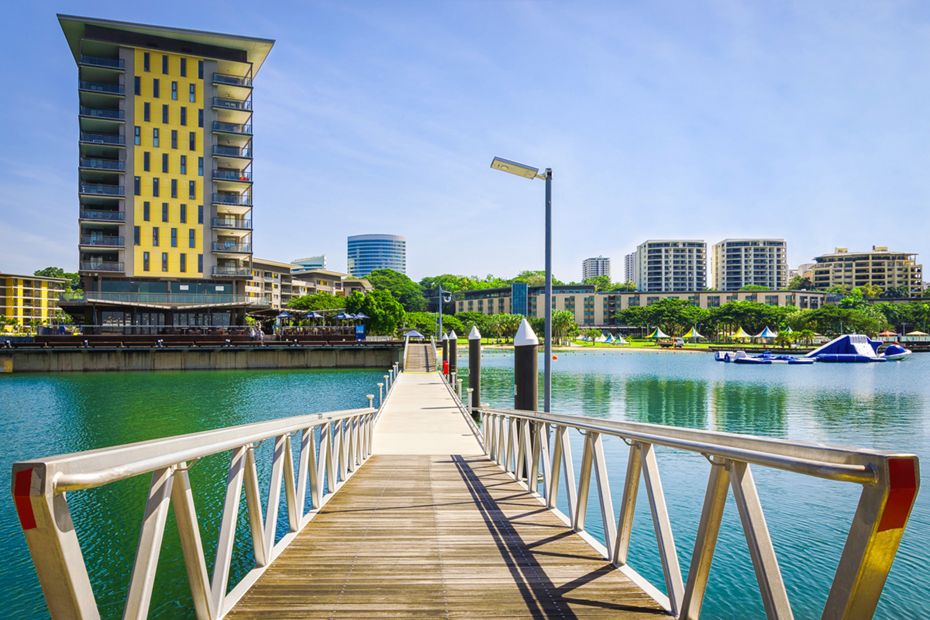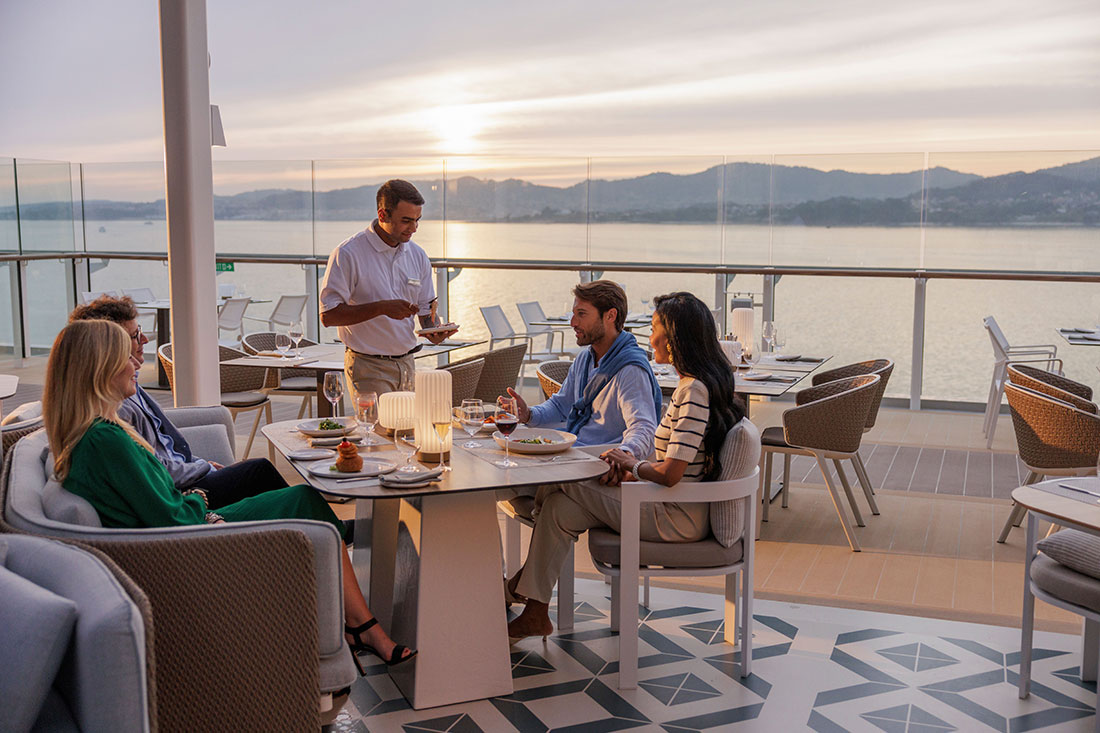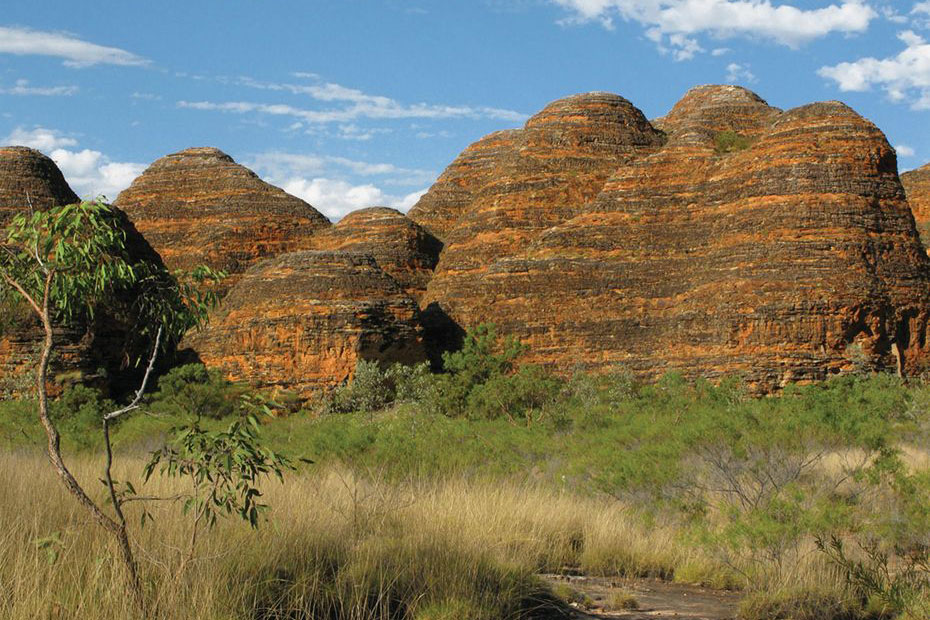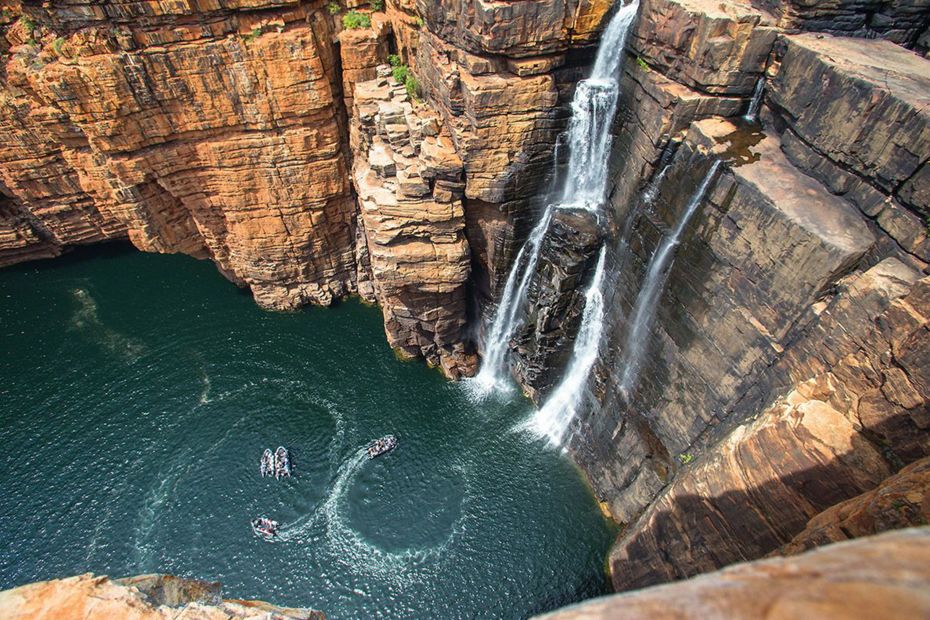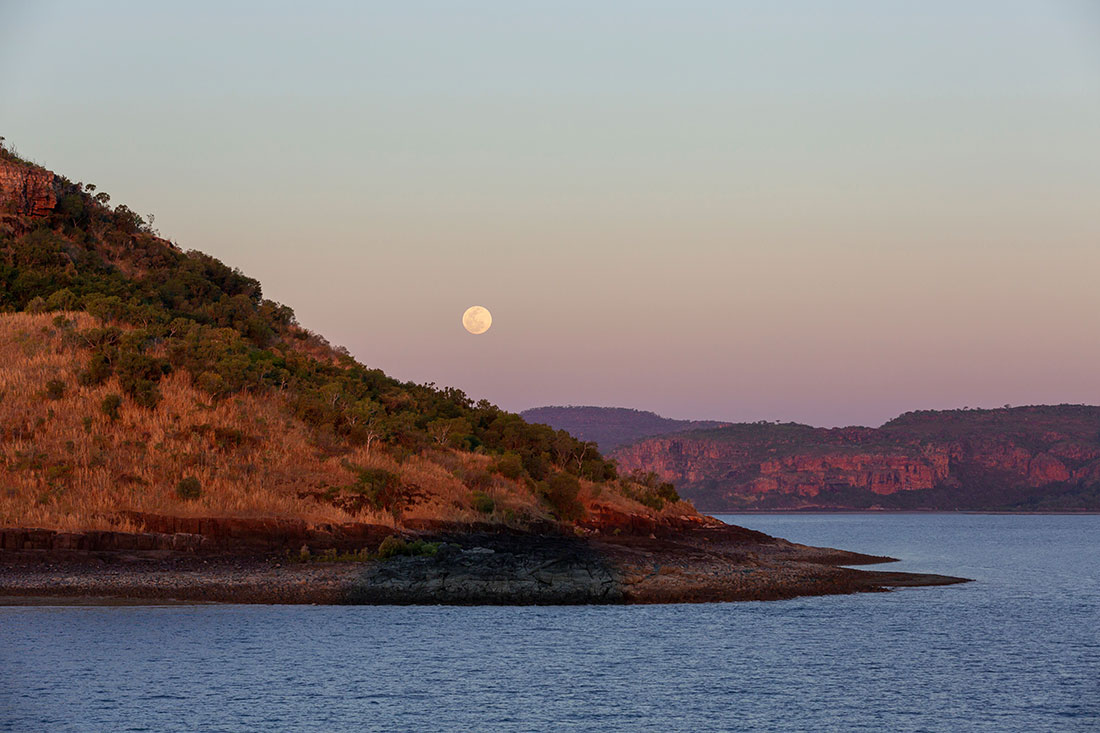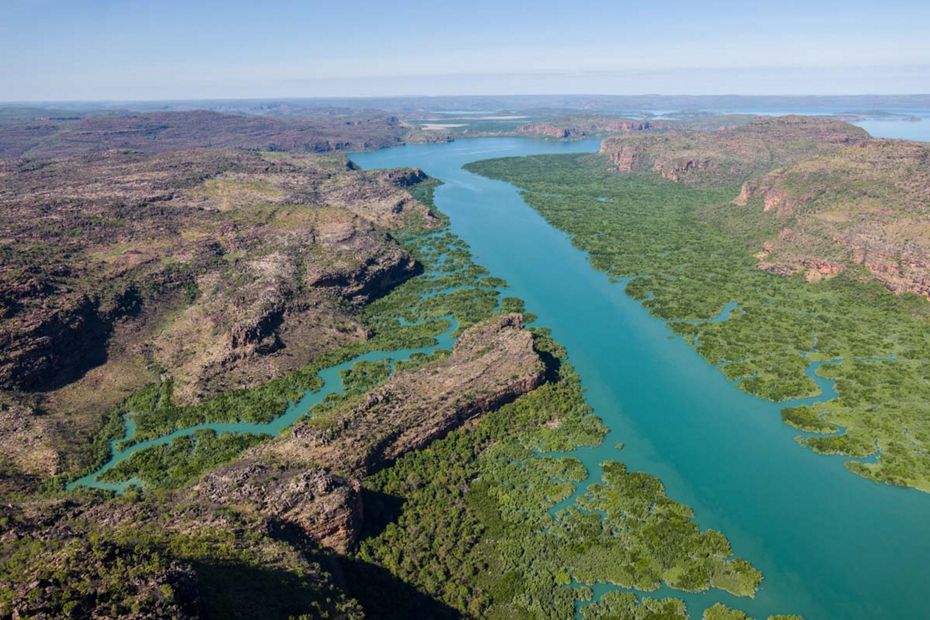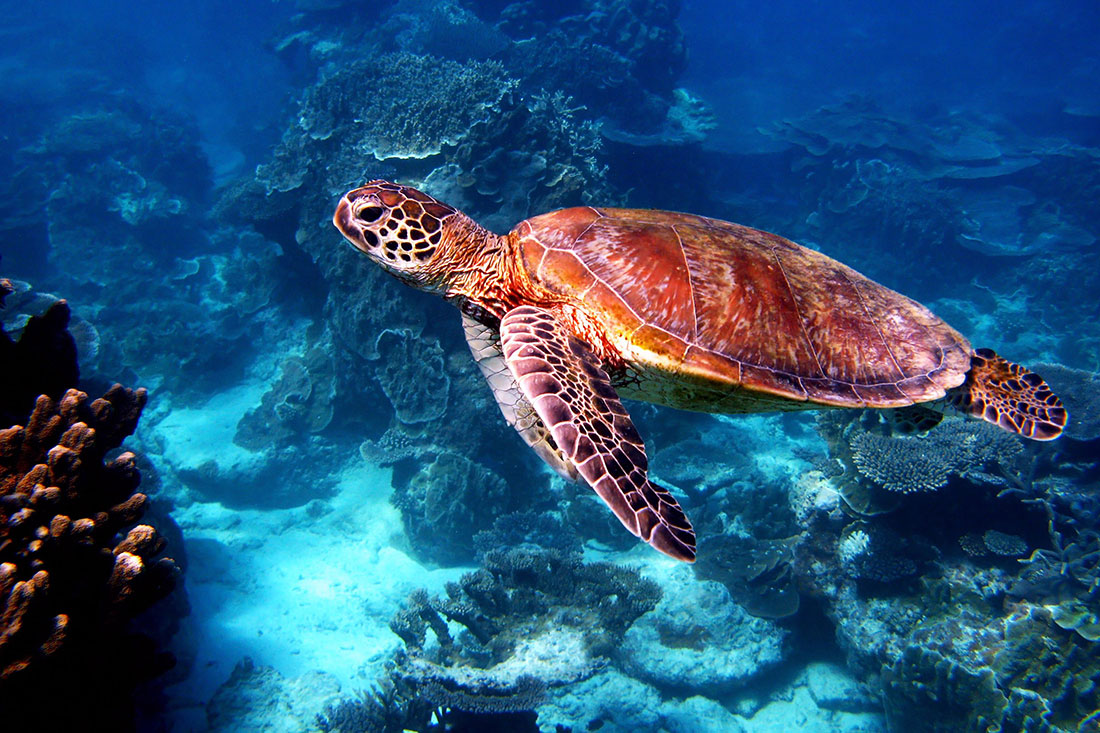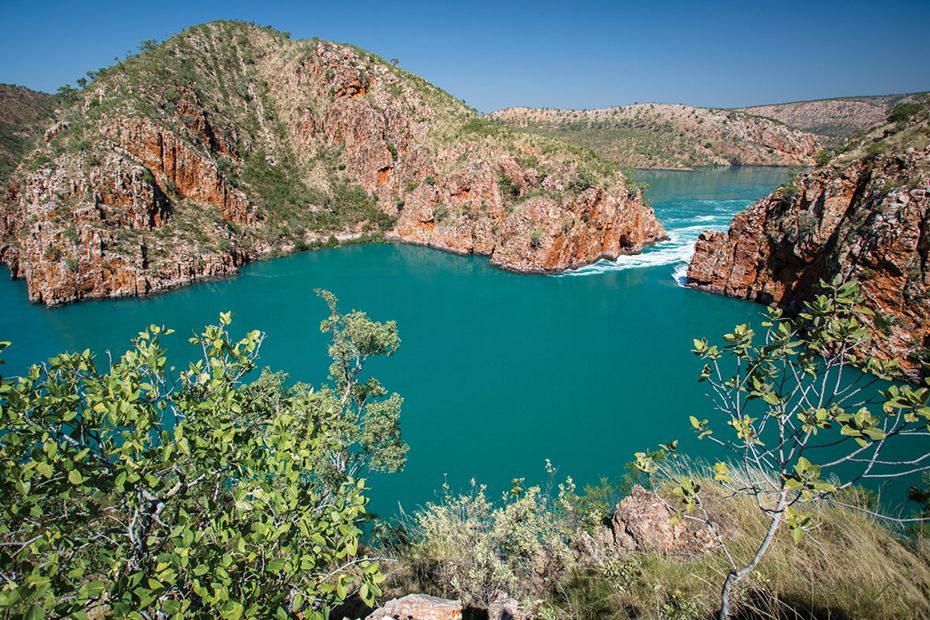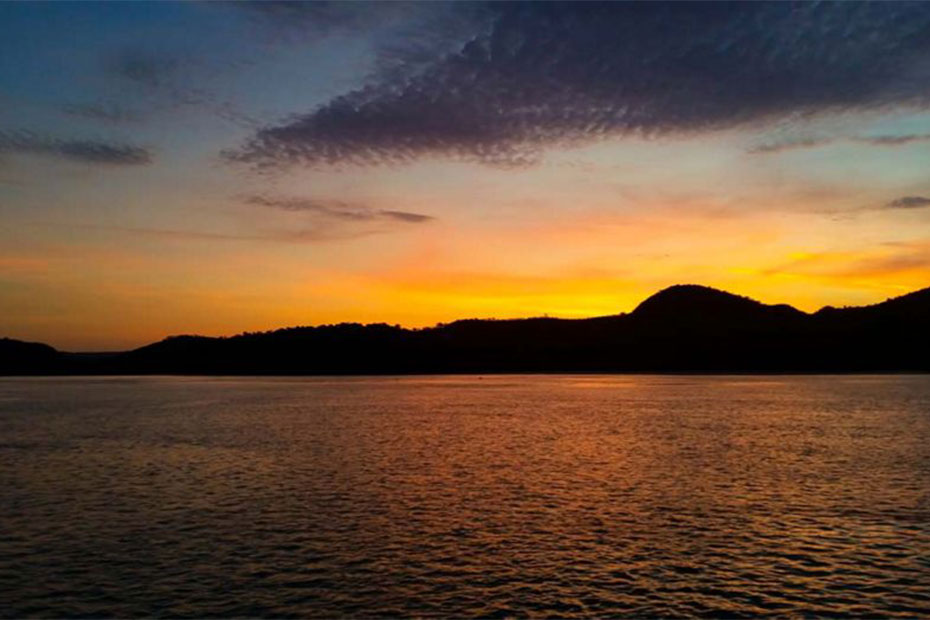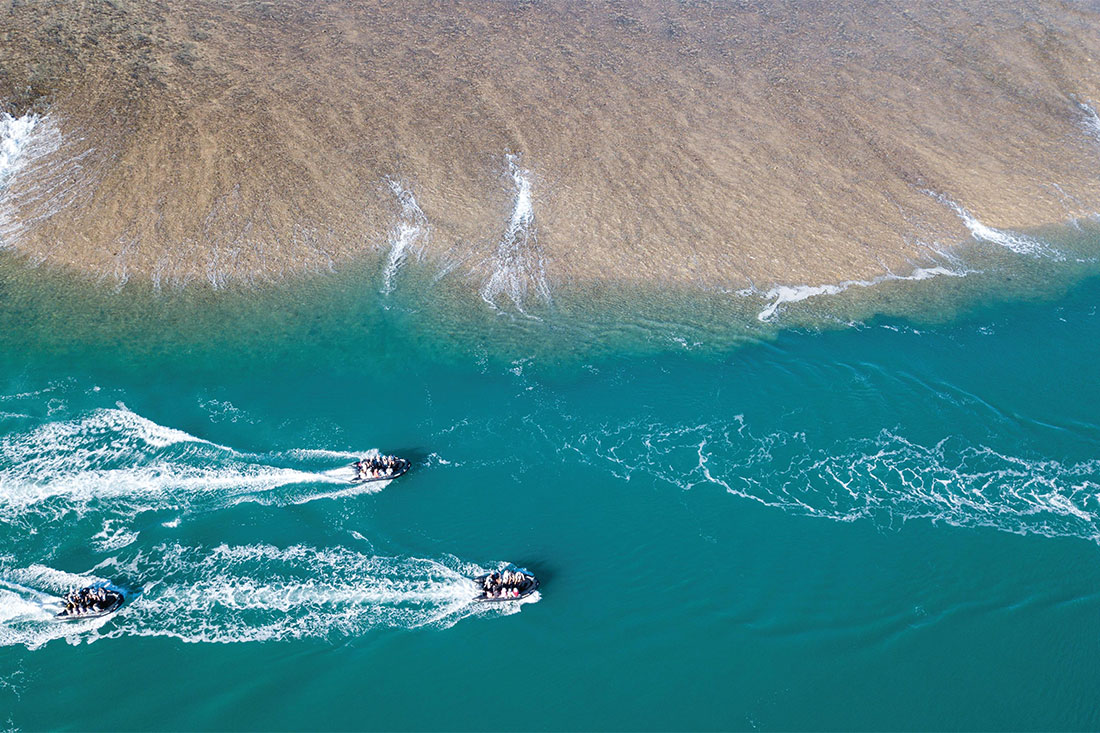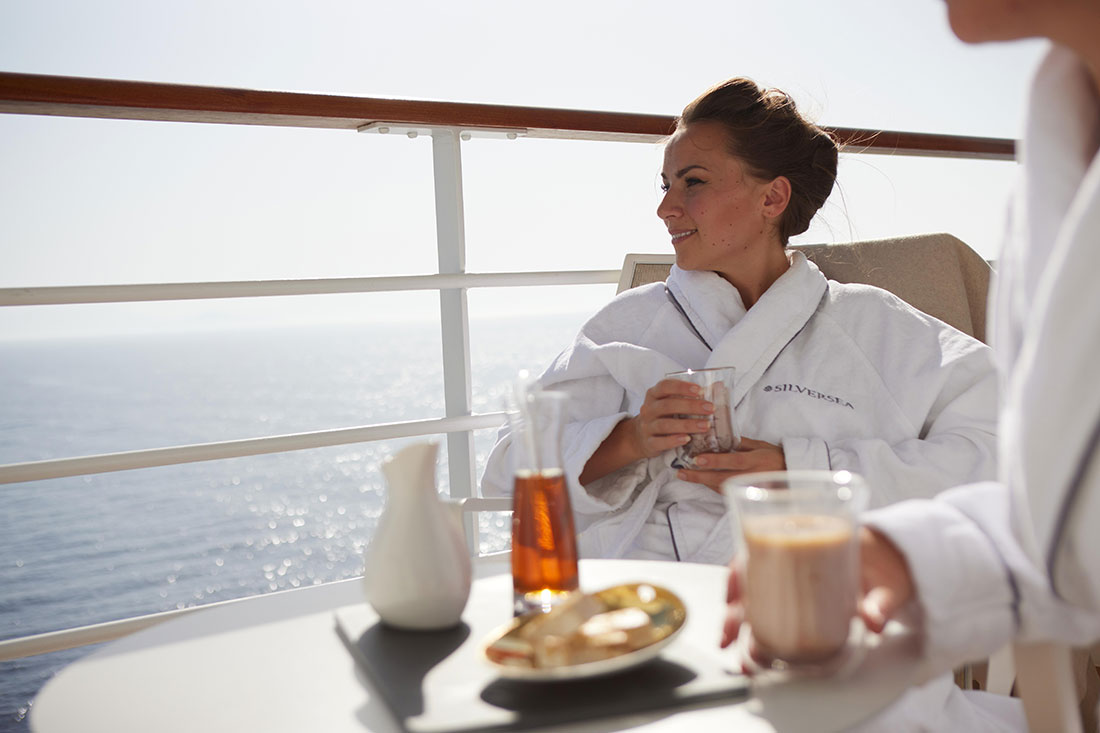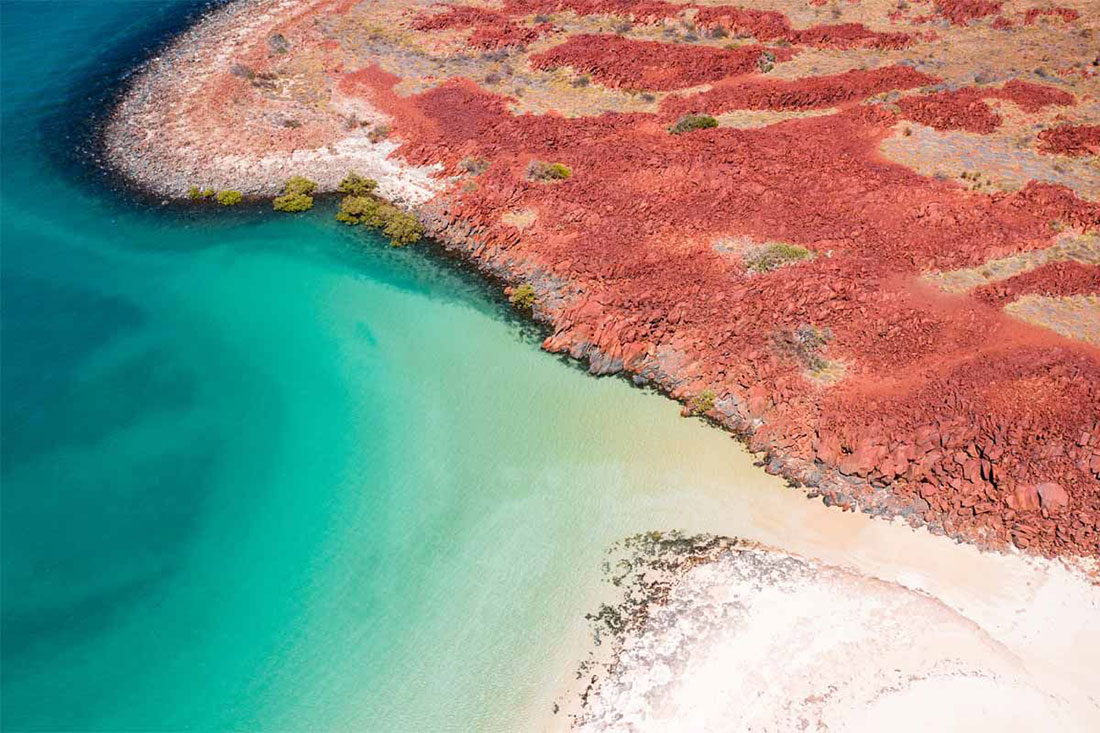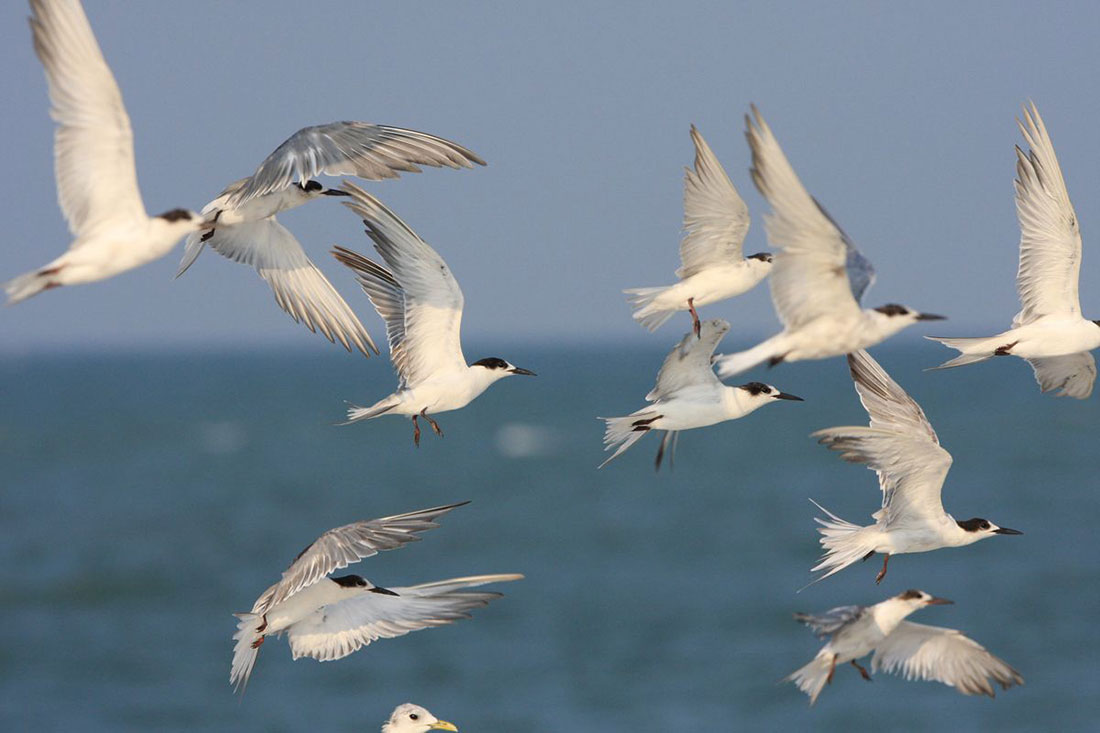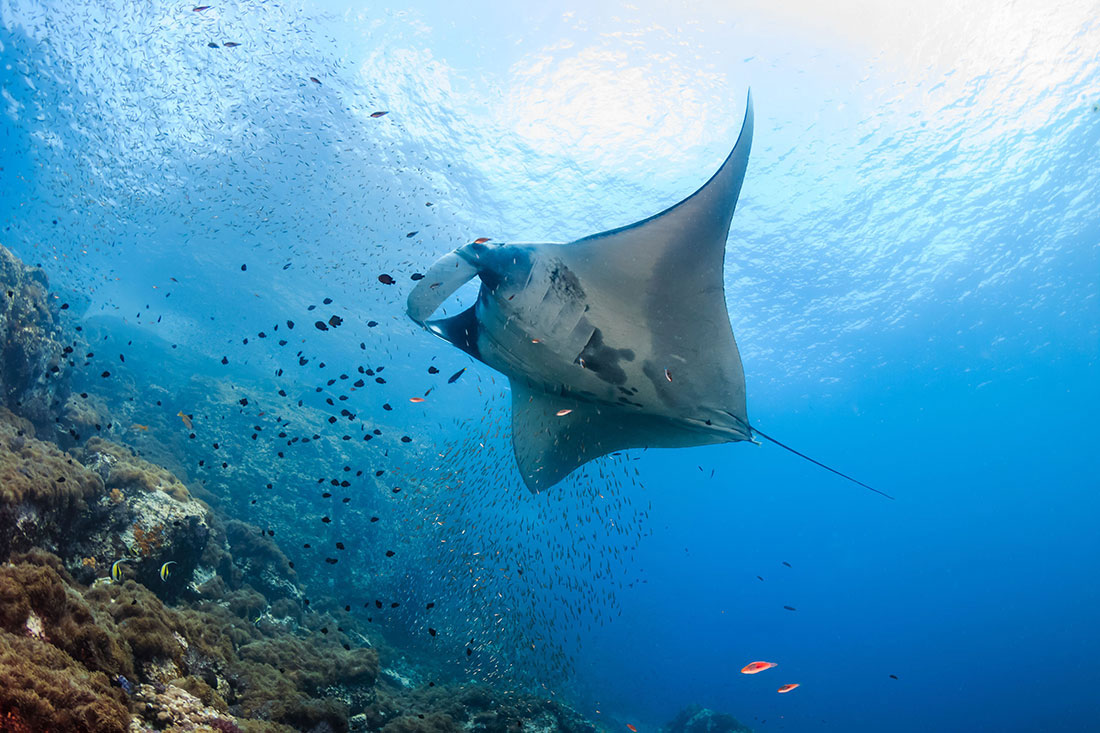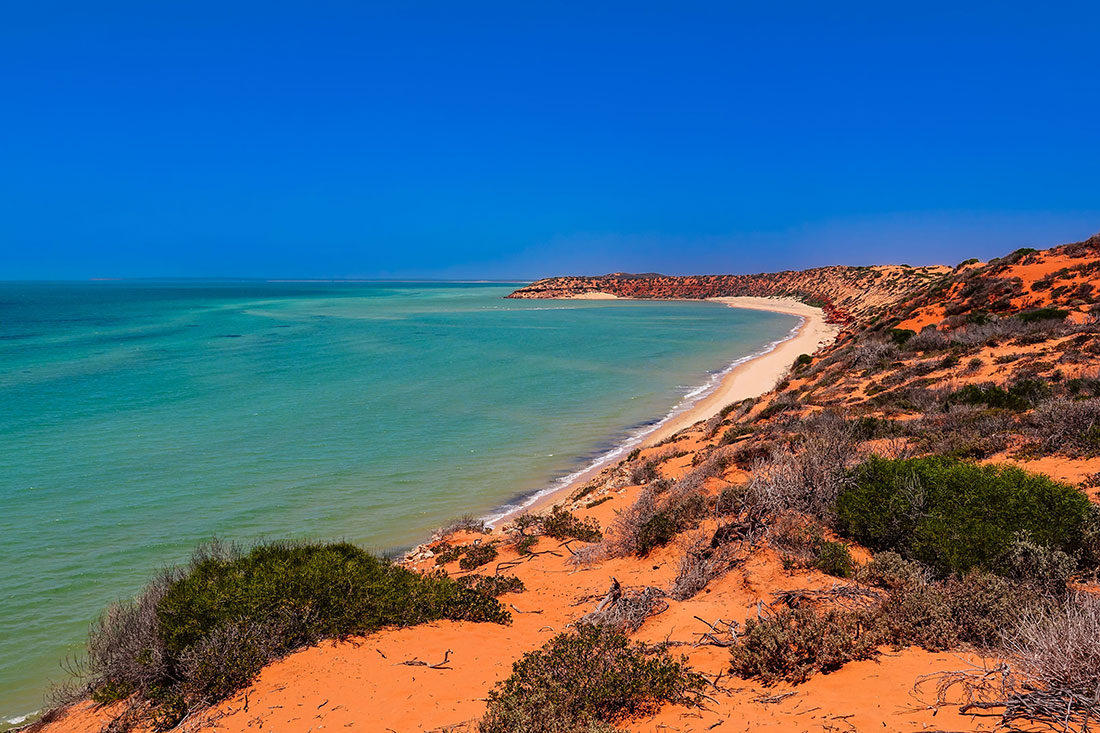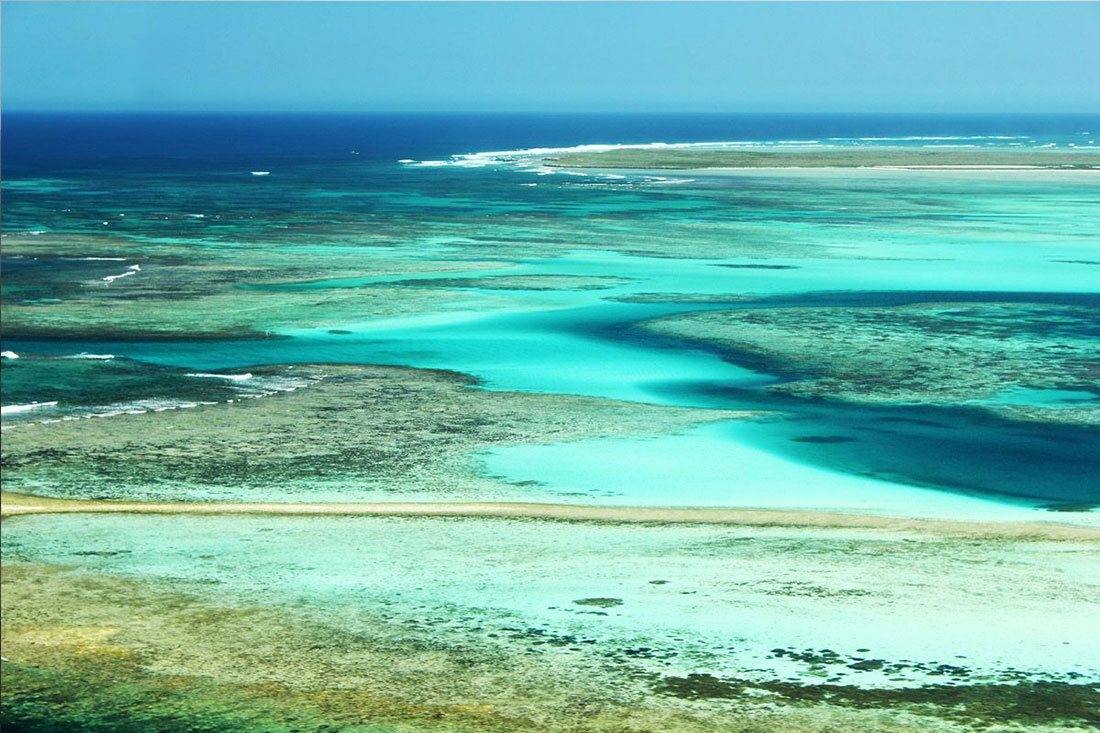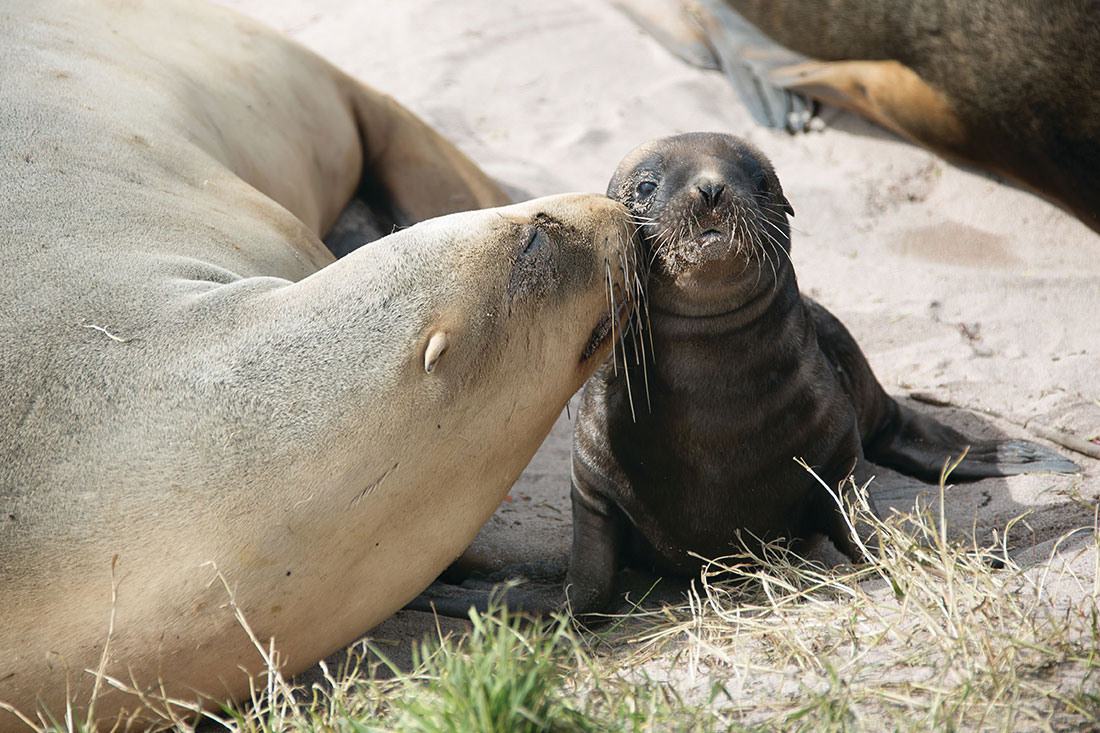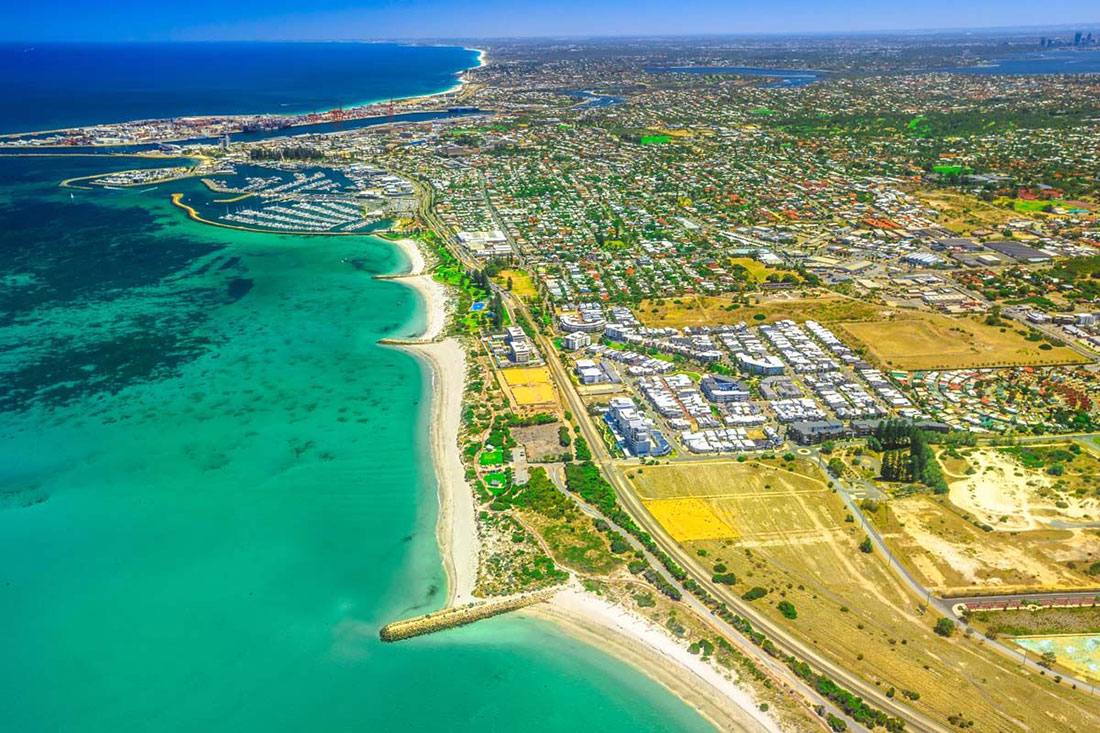CALL 1800 000 130
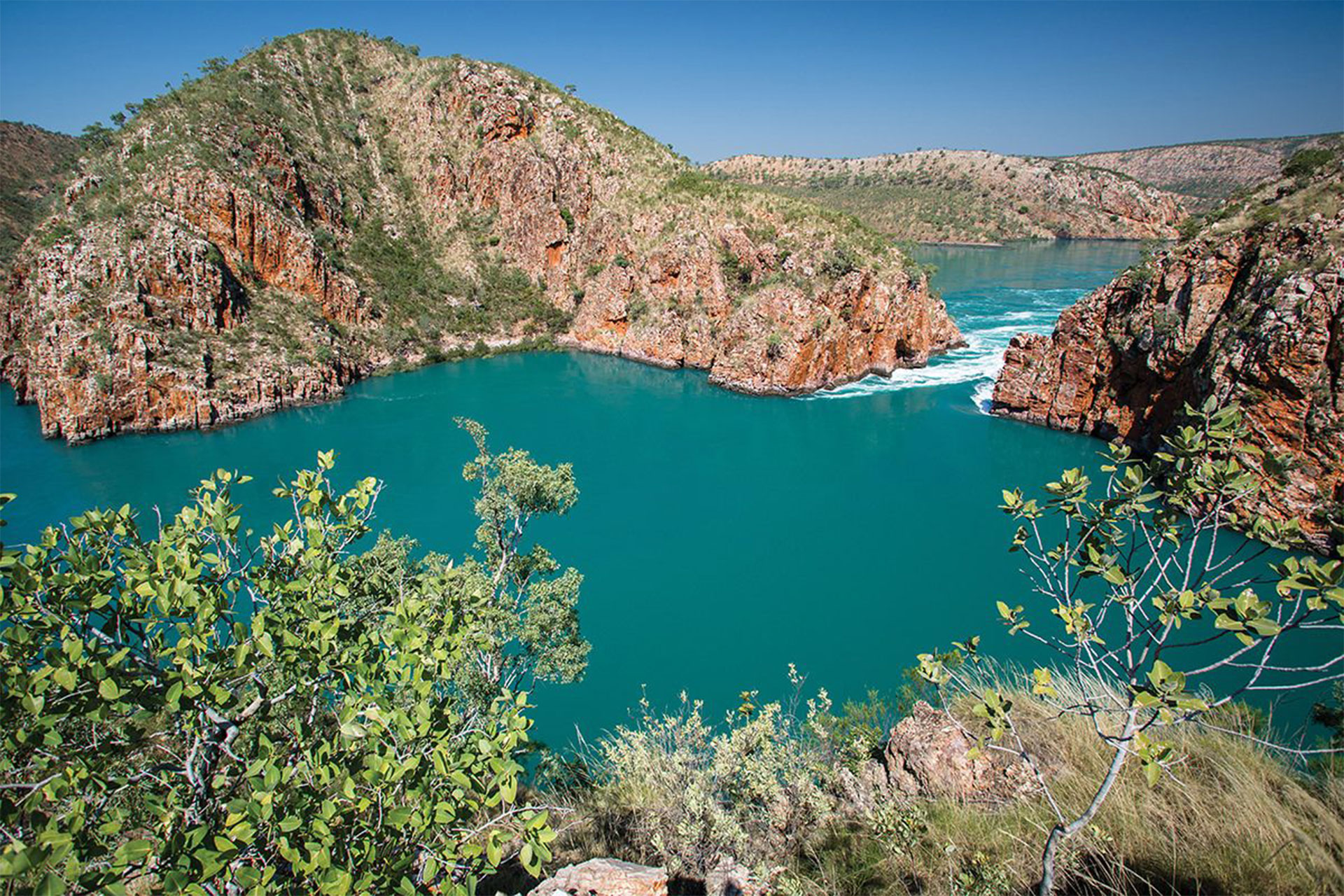
Silversea – Darwin to Fremantle (Perth) 17 Days
Darwin to Fremantle (Perth)About This Project
Spend August discovering Western Australia’s diverse coastline and archipelagos, on this 17-day expedition from Darwin to Perth. Encounter ancient rock art, surreal red cliffs, and meet the beady eyes of semi-submerged crocodiles. This journey showcases all of the Kimberley Coast’s natural drama, visiting atolls, mighty rivers and thriving reefs. Meet unique wildlife, potentially seeing sharks, dugongs and humpback whales, while exploring picturesque island chains.
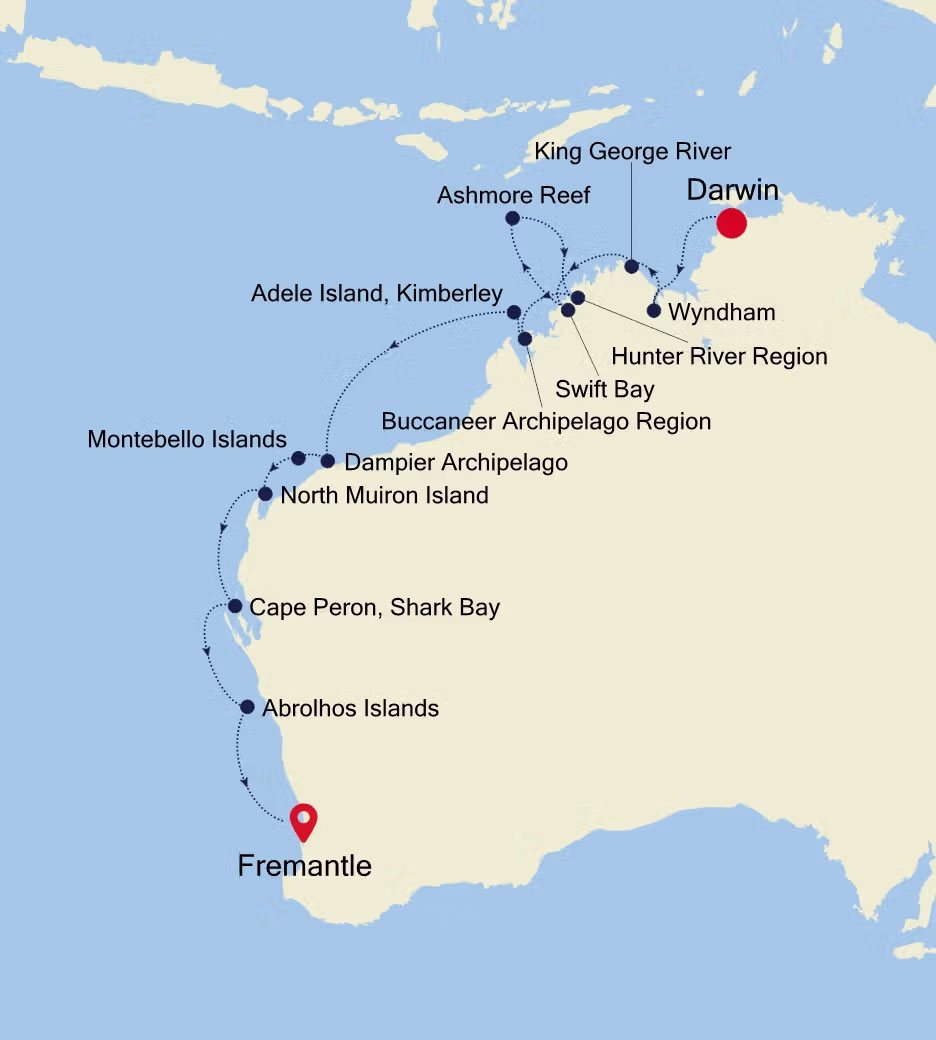
Itinerary
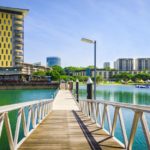 |
Day 1Darwin “Australia’s capital of the north is a uniquely tropical city, and a historically isolated outpost of this vast, diverse country. Reaching up towards the equator, a full 2,000 miles from Sydney and Melbourne, the city was named in honour of Charles Darwin by the British settlers who established a frontier outpost here. With a unique history, beautiful islands nearby, and a palette of sizzling Pacific flavours, colourful Darwin is an enchanting and exotic Australian destination. Crocodiles patrol the jungled waterways and tropical rainforests around Australia’s gateway to the Top End. Explore via airboat to look down on the veiny waterways of the mist-laced Kakadu National Park. The sounds of chattering birdlife and the gentle splash of fountains and waterfalls will fill your ears in George Brown Darwin Botanic Gardens. Soak it all in, before kicking back and relaxing with a picnic and a crackling barbecue. The sunshine and famous tropical pink sunsets mean many visitors naturally gravitate to the city’s soft sands to relax at spots like pretty Mindil Beach, as evening approaches. The adjoining market is filled with souvenirs and crafts stands and is the perfect great place to enjoy some fiery Asian flavours. Stroll the stalls, grab some food, and crack open an ice-frosted beer as the sunset show begins. It may be remote, but Darwin found itself on the front line during the Pacific War, as the Japanese air force unloaded their bombs onto the city in 1942. This relaxed unassuming city has a deeply resilient backbone, however, and you can explore the museums to learn more of the war’s impact on Darwin, as well as the devastating effects of one of Australia’s worst natural disasters, Cyclone Tracy in 1973.” |
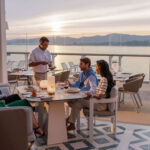 |
Day 2Day At Sea Days at sea are the perfect opportunity to relax, unwind and catch up with what you’ve been meaning to do. So whether that is going to the gym, visiting the spa, whale watching, catching up on your reading or simply topping up your tan, these blue sea days are the perfect balance to busy days spent exploring shore side. |
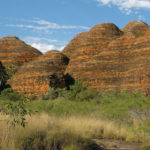 |
Day 3Wyndham, Australia Wyndham is a small settlement with the spirit of a Kimberley outback township. It was established in 1886 with the Halls Creek gold rush and sits on the Cambridge Gulf where several rivers converge. Today Wyndham has a population of roughly 900 people and operates largely as a port exporting cattle, servicing the mining industry and hosting a few small ships. For these vessels Wyndham is a gateway to the nearby Ord River. Conversely, cruising the peaceful and tree-lined Ord River is a chance to look for freshwater crocodiles, fruit bats, short-eared rock wallabies and a variety of birds, including Mangrove Herons and Mangrove Gerygones. Please note: All destinations on voyages in the Kimberley region, and the order in which they are visited, are subject to tidal variations and weather conditions. |
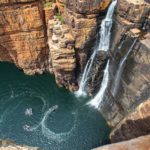 |
Day 4King George River (Kimberley, Western Australia), Australia The King George Falls is one of the Kimberley’s most magnificent natural wonders. At 80 meters (260 feet), the thundering spectacle of twin cascades are among the highest in Australia. The river weaves through an amazing landscape of near vertical red rock formations and a parade of wildlife — carnivorous saltwater crocodiles and amazing birdlife, including giant raptors and the Brahminy Kite. |
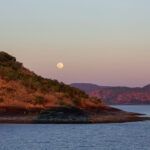 |
Day 5Swift Bay, Australia Australia’s jaw dropping Kimberley region shelters some of the oldest collections of rock art. This ancestral art depicting warriors, animals or nature is an authentic testimony to Aboriginal’s culture, rituals and traditions. Tranquil Swift Bay offers you the opportunity to discover astonishing Wandjina art galleries and wake up the adventurer in you. A quick zodiac ride on the turquoise water gives you a chance to admire the coast’s spectacular scenery, while a short walk across the rocky and wild landscape – 250 meters from the landing site, leads you to the historic and artistic caves.In these ancient galleries, two different styles of rock art can be observed: the Gwion Gwion style, represented by long and skinny human-like figures and the much rounder Wandjina style. Both very impressive and special. You’ll need to keep your wits about you if you want to admire the most spectacular of the ancient paintings though, as it is painted on the ceiling and only visible by lying down. However, those with claustrophobia beware! the ceiling is only about a metre above your head. Those who do wiggle in to be the best position will fully appreciate the artwork’s enormous scale and size and surely won’t be left indifferent. |
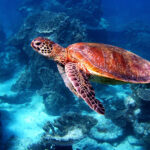 |
Day 6Ashmore Reef, Australia Lost in the immensity of Indian Ocean and situated 630 km of Broome, Ashmore Reef Marine Park is an Australian External Territory that covers 583 square km. With its diverse shades of blue, its underwater wonders and feathery friends, this protected area is one of Australia’s most beautiful natural treasures. The three tiny islands and their surrounding waters are home to an oasis of flourishing wildlife. Ashmore Reef is known to be the favourite place of more than 40 bird species. 100,000 seabirds breed there every year, including crested terns, white-tailed tropicbirds and greater frigatebirds. The islands are also a haven for thousands of migratory shorebirds like curlew sandpipers, bar-tailed godwits and great knots – some of them coming from very far places like Siberia! On the ocean side, the colourful reef is home to around 500 species of fish but also marine turtles, dugongs and many playful dolphins. Given the rich and fragile environment, Ashmore Reef has been declared a Sanctuary zone, providing the highest level of protection for the wildlife and minimising disturbance from human activities. Only scientific research is permitted but the visitors can access to the Recreational Use Zone, which includes a small area of the West Island, and thus discover this unique place. |
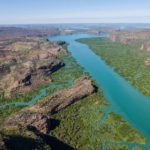 |
Day 7Hunter River Region (Western Australia), Australia The Hunter River is home to an immense mangrove system surrounded by soaring red sandstone cliffs. Narrow mangrove channels shelter numerous bird species, mudskippers, fiddler crabs and the infamous saltwater crocodile; the most aggressive crocodile species known to man. Naturalist Island at the mouth of the river has a stunning stretch of sandy beach that makes a perfect landing site for small helicopters that can pick up visitors wishing to explore some of the Kimberley’s vast interior. The highlight inland is the famous Mitchell Falls where four tiers of waterfalls plunge into deep pools that flow out into the mighty Mitchell River. The headwaters of the falls are cool and a dip in the fresh water is a welcome reprieve from the heat of the heartland. |
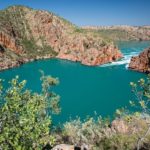 |
Day 8Buccaneer Archipelago Region, Australia Set off the coast of Western Australia, the Buccaneer Archipelago is one of the Kimberley’s finest secrets. The Archipelago, 50 k2 (19 sq mi), is made up of around 800 islands and protect the mainland from the huge 12 metre tides and astonishing speed of the Yampi (or, in traditional Aborigine, “Yampee”) Sound. The speed and power of the water many not make for pleasant bathing, but do however result in fantastic natural phenomena. One fine example is the horizontal reversible waterfall in Talbot Bay. The tidal pull is responsible for the “reversible” nature of the falls, however, this also hides narrow gaps between the islands, making for treacherous sailing conditions. Isolated graves of sailors and divers are testimony to the danger. William Dampier sighted the Archipelago in 1688 but it would not be until 1821 that the Archipelago would become known as Buccaneer (a term coined by Captain Phillip Parker King) “in commemoration of William Dampier’s visit to this part of the coast “. Commander John Lort Stokes also noted the area in his 1838 record. Enterprising individuals were initially attracted to the Buccaneer Archipelago in the 1800s due to the superior pearling as well as the rich iron ore deposits. Pearling conducted by luggers in the 1880s was concentrated in Cygnet Bay, Cascade Bay, Cone Bay and Strickland Bay. More recently, mining operators established open-cut mines on Koolan Island on the east side of the Sound. Some of the richest iron ore in the world is extracted here to this day. |
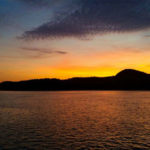 |
Day 9Buccaneer Archipelago Region, Australia Set off the coast of Western Australia, the Buccaneer Archipelago is one of the Kimberley’s finest secrets. The Archipelago, 50 k2 (19 sq mi), is made up of around 800 islands and protect the mainland from the huge 12 metre tides and astonishing speed of the Yampi (or, in traditional Aborigine, “Yampee”) Sound. The speed and power of the water many not make for pleasant bathing, but do however result in fantastic natural phenomena. One fine example is the horizontal reversible waterfall in Talbot Bay. The tidal pull is responsible for the “reversible” nature of the falls, however, this also hides narrow gaps between the islands, making for treacherous sailing conditions. Isolated graves of sailors and divers are testimony to the danger. William Dampier sighted the Archipelago in 1688 but it would not be until 1821 that the Archipelago would become known as Buccaneer (a term coined by Captain Phillip Parker King) “in commemoration of William Dampier’s visit to this part of the coast “. Commander John Lort Stokes also noted the area in his 1838 record. Enterprising individuals were initially attracted to the Buccaneer Archipelago in the 1800s due to the superior pearling as well as the rich iron ore deposits. Pearling conducted by luggers in the 1880s was concentrated in Cygnet Bay, Cascade Bay, Cone Bay and Strickland Bay. More recently, mining operators established open-cut mines on Koolan Island on the east side of the Sound. Some of the richest iron ore in the world is extracted here to this day. |
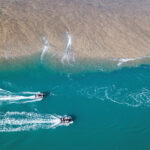 |
Day 10Adele Island, Kimberley, Australia Appearing like a charmed apparition, Adele Island is an oasis of tranquillity peeking out of the Indian Ocean. It’s hard to capture the sense of quiet perfection as you stand on this sandy paradise, 65 miles away from Kimberley’s rugged coast. The changeable sands of the island expand and contract with the contented sighs of the tides, and wide sandbanks ebb and flow with the whims of the water. At the core of Adele Island is a gorgeous tidal lagoon, rich in biodiversity. The island is a thriving ocean outpost for breeding birds and turtles, and the hospitable waters form a lively nursery for young humpback whales and bottlenose dolphins. Keep an eye out for large silhouettes sliding just below the shallow surface. The knee-deep sea here means you can easily spot wonderful sea creatures swimming agilely past. Keep your wits about you though, there may also be beady-eyed crocodiles, slaloming menacingly. Encounter beautiful sea turtles, diverse fish life, and remarkable birds like the lesser frigate bird and brown booby, all while exploring this pristine island gem. Stand in awe as plumes of seabirds rotate around you like a gentle whirlwind. Endless fields of immaculate coral reefs coat the seabed, alive like underwater cities, bustling with life and characters. With only the sounds of rhythmic waves sloshing, sandy footsteps crunching and vocal bird life singing out, melodic Adele Island hits all the right notes. |
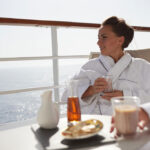 |
Day 11Day at sea Days at sea are the perfect opportunity to relax, unwind and catch up with what you’ve been meaning to do. So whether that is going to the gym, visiting the spa, whale watching, catching up on your reading or simply topping up your tan, these blue sea days are the perfect balance to busy days spent exploring shore side. |
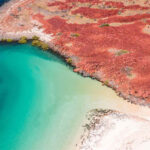 |
Day 12Dampier Archipelago, Australia Rust coloured rocks contrasting with pale Spinifex grass, white beaches and aquamarine seas create a scenic kaleidoscope in the Dampier Archipelago. Forty-two islands lie around the similarly coloured Burrup Peninsula. The archipelago is named after William Dampier, the English pirate turned explorer, who was the first European visitor in 1699. But the occupation of the area is ancient. The archipelago and peninsula are known as Murujuga by the Aboriginal people. Clearly recognisable are animals and people, while mythical beings and geometric patterns require more interpretation. The Dampier Marine Park protects the archipelago’s coral reefs, sponge gardens and seagrass meadows. A five-metre tidal range adds rocky shores and sand flats to this list of habitats. A high biodiversity of corals and fish are matched by 1200 molluscs. Four turtle species live in these waters including Flatback and Hawksbill Turtles. Snorkelling here reveals a rich sample of this treasure trove of life. Flora and fauna on the arid rocky islands require good adaptations. Reptiles and the shy Rothschild’s Rock Wallaby escape the midday sun in rocky overhangs. Much of the birdlife, like Ospreys and Sea-eagles, rely on the sea for food. Look for their huge stick nests on seaside rocks. Some nests are decades old, an easier time span to grasp. |
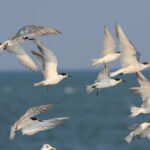 |
Day 13Montebello Islands, Australia Montebello is Italian for ‘beautiful mountain’. What a misnomer! The islands are low, flat and arid. They were named by French Explorer Nicolas Baudin in 1801 after a battle in Italy. The war-like name may suit, as the British used the islands for three nuclear bomb tests in the 1950s. Today visitors must avoid two radioactive islands. Other islands are okay to explore. Two endangered mammals—the Mala (Rufous Hare-Wallaby) and the Djoongari (Shark Bay Mouse)— thrive here. They were almost wiped out by introduced cats and foxes on the mainland and were brought to this island ark for safety. The 170 islands are 120 kilometres (75 miles) off mainland Australia. Aboriginal people visited until eight thousand years ago, when rising sea levels after the last ice age made them too far offshore to reach. The next visitors were in 1622 when survivors of the wrecked British ship Tryall reached the arid islands. Porcupine Grass or Spinifex grows on rocky areas while wattle shrubs favour sand. The islands are an important seabird breeding colony. Look for Roseate and Greater Crested Terns. Sooty Oystercatchers forage on the rocks while Beach Stone-curlews roam beaches. Coral reefs and lagoons surround the islands in the Montebello Marine Park. One hundred and fifty species of hard coral, 450 species of fish and 170 species of echinoderms (sea stars, sea urchins and sea cucumbers) keep snorkellers happy. Green, Hawksbill and Flatback Turtles nest on beaches and provide highlights when seen in the water. |
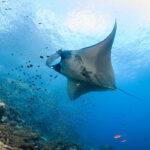 |
Day 14North Muiron Island, Australia A spectacular collision of colour spills across the seabed around North Muiron Island – which has to be one of the best spots in the world for snorkelling and scuba diving. Immerse yourself in this underwater universe as tiny fish flit between the corals, and elegant rays sweep gracefully past. Sitting off the North West Cape, the two utterly unspoiled Muiron Islands are part of the UNESCO World Heritage Site listed Ningaloo Coast. Warm Indian Ocean waters collide with the cooler waters of the West Australian Current here, forming a remarkable biological hot spot that thrives with rich life and incredible diversity. These unique conditions form masses of plankton for gentle giants of the ocean to graze upon – even luring groups of the ocean’s biggest fish – colossal whale sharks. From March to July, the cows of the sea carefully vacuum the sea bed for their food. Other massive mammals, like dugongs, dolphins, and pilot whales, also drop in throughout the year. Snorkel to look into the riot of activity below the undulating waves. Spot turtles, parrotfish and butterfly fish among the thousands of species at home in these balmy waters. A true Gem of Western Australia’s Coral Coast, the remarkable reefs of North Muiron Island serve up a brilliant banquet of colour and curiosity. |
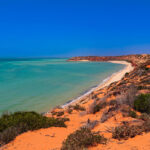 |
Day 15Cape Peron, Shark Bay, Australia Shark Bay is Australia’s largest bay, with a beach stretching over 1,000 kilometers. François Peron National Park lies within the Shark Bay World Heritage area and adjacent to the Shark Bay Marine Park. This is where the rust-red desert sand meets the dazzling white-sand beach and the azure waters of the sea. At the northerly tip of the national park is Cape Peron, sitting at the confluence of two major currents, the cape attracts an impressive array of marine life. Take a hike with the expedition team from Cape Peron to the Skipjack Point viewing platforms, perched on the cliff edge with views out across the marine park. Alternatively, join the expedition team for an interpretive nature walk through the impressive landscape of acacia-cloaked red dunes and arid shrublands surrounded by turquoise water with views over the coastline. |
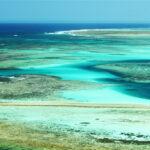 |
Day 16Abrolhos Islands, Australia Human drama and nature rival each other to be the most fascinating drawcards of the Houtman Abrolhos or Abrolhos Islands. In 1629 the Dutch ship Batavia was wrecked, with most crew and passengers reaching dry inhospitable Beacon Island. Thus, began a horror story of mutiny, betrayal, rape, murder of children and survival. On one island, soldiers built a stone stockade which is the first European structure in Australia. Eventually the remaining survivors were rescued, and the murderers were hung on one island or marooned on the mainland (Australia’s first European settlers). A century later, desperate survivors of another wrecked Dutch ship Zeewijk lived (or died) for ten months on the islands. Life in the sea is an unusual mix. The warm southward-flowing Leeuwin Current meets cool southern waters at Abrolhos creating homes for both tropical and temperate marine life. A diverse coral reef grows beside cool water algae. Two thirds of the 400 fish species are tropical, while cool water-favouring Australian Sea-lions and Western Rock Lobsters (Australia’s most valuable fishery) are close to their northern limit. Seabirds, like the cooler climate Pacific Gulls, mix with tropical species like Bridled and Roseate Terns. The only colony of the Australian Lesser Noddy breeds here, along with two million Wedge-tailed Shearwaters. On land, amongst the Nitre shrubs and Saltbushes, are Abrolhos Painted Quails and Dwarf Bearded Dragons and shy Tammar Wallabies. Their ancestors survived the hungry castaways. |
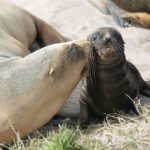 |
Day 17Abrolhos Islands, Australia Human drama and nature rival each other to be the most fascinating drawcards of the Houtman Abrolhos or Abrolhos Islands. In 1629 the Dutch ship Batavia was wrecked, with most crew and passengers reaching dry inhospitable Beacon Island. Thus, began a horror story of mutiny, betrayal, rape, murder of children and survival. On one island, soldiers built a stone stockade which is the first European structure in Australia. Eventually the remaining survivors were rescued, and the murderers were hung on one island or marooned on the mainland (Australia’s first European settlers). A century later, desperate survivors of another wrecked Dutch ship Zeewijk lived (or died) for ten months on the islands. Life in the sea is an unusual mix. The warm southward-flowing Leeuwin Current meets cool southern waters at Abrolhos creating homes for both tropical and temperate marine life. A diverse coral reef grows beside cool water algae. Two thirds of the 400 fish species are tropical, while cool water-favouring Australian Sea-lions and Western Rock Lobsters (Australia’s most valuable fishery) are close to their northern limit. Seabirds, like the cooler climate Pacific Gulls, mix with tropical species like Bridled and Roseate Terns. The only colony of the Australian Lesser Noddy breeds here, along with two million Wedge-tailed Shearwaters. On land, amongst the Nitre shrubs and Saltbushes, are Abrolhos Painted Quails and Dwarf Bearded Dragons and shy Tammar Wallabies. Their ancestors survived the hungry castaways. |
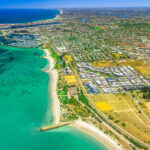 |
Day 18Fremantle (Perth), Western Australia, Australia Coming in at number seven on Lonely Planet’s list of best places to live, Fremantle has finally begun to shake off the shadow of neighbouring big brother Perth. With just 20 kilometres separating the two cities, Perth, with its happy hippie vibe has long been the big pull for visitors to the region. But Fremantle’s colourful past and bright future gives Perth as good as it gets. The coastal city has undergone a complete revamp since the America’s Cup thrust Fremantle into the spotlight in 1987. Over AUS$ 1,3 billion has been poured into revamping the city, and the fruits of the city’s labour are ripe for picking. Investment in the arts has brought Fremantle to the fore of thriving urban culture, while generous grants for small businesses has led to groovy live-music rooms, hipster bars, boutique hotels, left-field bookshops, craft-beer breweries, Indian Ocean seafood shacks amid the buskers and beaches. If that doesn’t not sound like your glass of beer, we guarantee a stroll along the wooden riverside walkway will change your mind. The city also enjoys another, rather different status. Fremantle was one of Australia’s penal cities, vestiges of which can still be found in Fremantle Prison. Almost 10,000 convicts were condemned to life imprisonment here between 1850 and 1868, but the prison remained in use until 1991. Today, the memorable sandstone building is a UNESCO World Heritage Site and at just 15 minutes from port is well worth a visit. Just don’t forget your get out of jail free card. |
Silversea Rates 2025
| Silversea Rates 2025 (per person / twin share) | |||
|---|---|---|---|
| 10 Nights Expedition cruise | Sq Mtrs | Door-to-Door | Port-to-Port |
| Vista Window Suite | 22 | $22,400 | $18,850 |
| Veranda Suite | 27 inc veranda | $27,500 | $23,050 |
| Deluxe Veranda Suite | 27 inc veranda | $32,500 | $27,450 |
| Medallion Suite | 48 inc veranda | $45,800 | |
| Silver Suite | 54 inc veranda | $59,500 | |
| Royal Suite | 96 inc veranda | $91,000 | |
| Grand Suite | 122 inc veranda | $101,300 | |
| Owner’s Suite | 77 inc veranda | $119,800 | |
Silversea Rates 2026
| Silversea Rates 2026 (per person / twin share) | |||
|---|---|---|---|
| Cruise | Dates | Door-to-Door | Port-to-Port |
| Darwin to Perth 17 Days | 3 Aug – 20 Aug | From $25,600 | From $24,500 |
SILVERSEA EXPEDITIONS COMPLETELY INCLUSIVE PACKAGES
Door-to-Door
PEACE OF MIND – ALL INCLUSIVE
For a relaxing, seamless journey from the moment you depart home, this fare includes airfare, transfers, and shore excursions.
Pre cruise benefits
- Private Executive Transfers
- International flights – Economy class
- or Business Class upgrade
- Airport transfers
All onboard luxury inclusions
- Food and beverages
- Butler service
- Expedition gear
Shore excursions
- Shore excursions with Zodiacs
Post cruise benefits
- Hotel
- Airport transfers
- International flights – Economy class or Business Class upgrade
- Private Executive Transfers
Port-to-Port
FLEXIBILITY – ALL INCLUSIVE
For those who prefer to manage their own airfare and transfers, but still want included shore excursions, this fare is for you.
All onboard luxury inclusions
- Food and beverages
- Butler service
- Expedition gear
Shore excursions
- Shore excursions with Zodiacs
All fares are based on per person twin share and include exclusive Kimberley Cruise Escapes Club bonus savings of between $300 – $2000 scaled on suite type. Solo occupancy is between a 0 – 100 % supplement – please enquire for our best or zero supplement to suit. Fare/s are correct at time of printing though can fluctuate at Silversea’s discretion and whilst best efforts are made to maintain correct pricing on this site, it is not live / dynamic pricing.
*V – Past guests of Silversea will be welcome to present their Venetian Society details for an additional 5% loyalty saving
Category
SilverseaWe’ll help you plan the perfect Kimberley cruise at the best price guaranteed Help Me Find My Cruise

